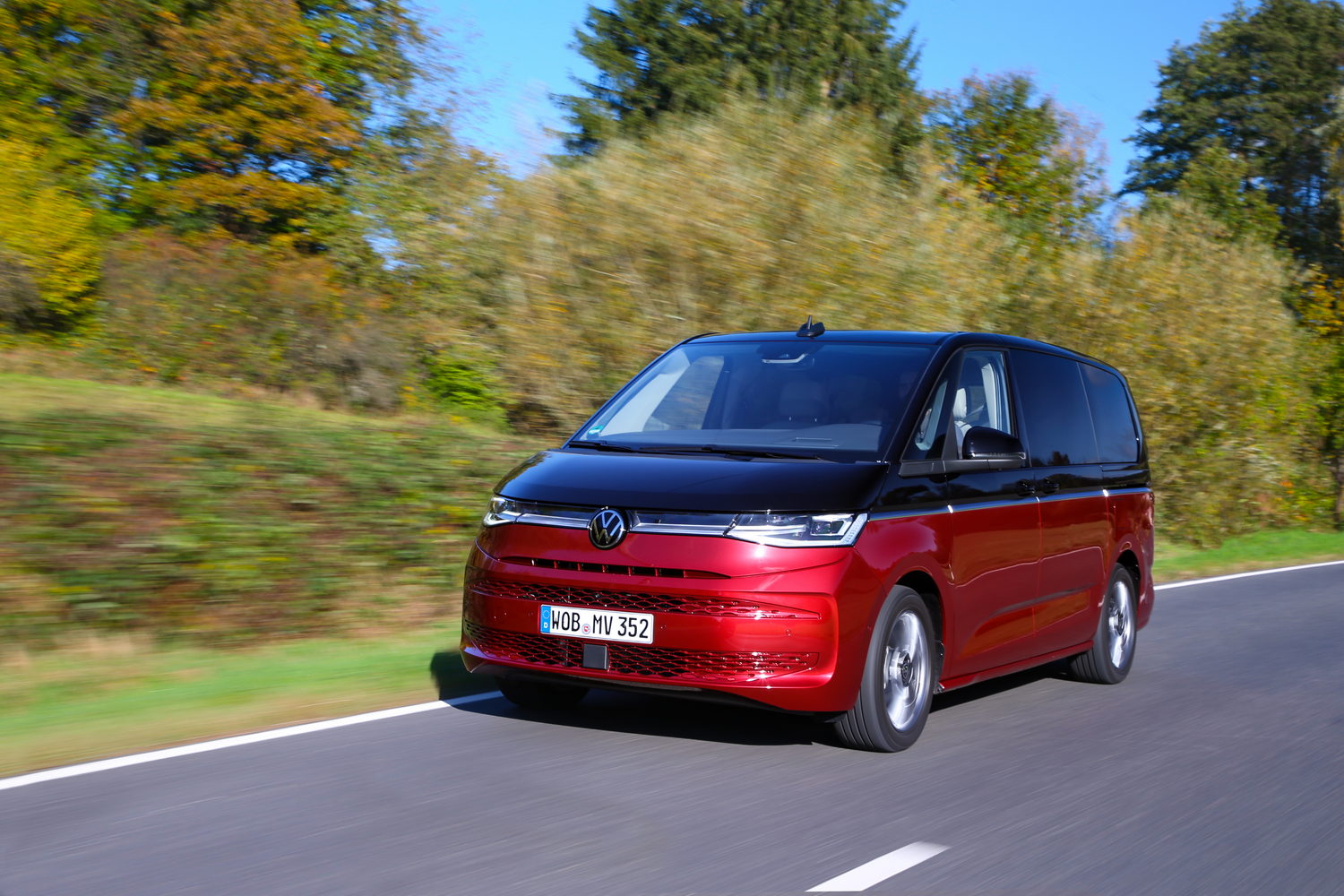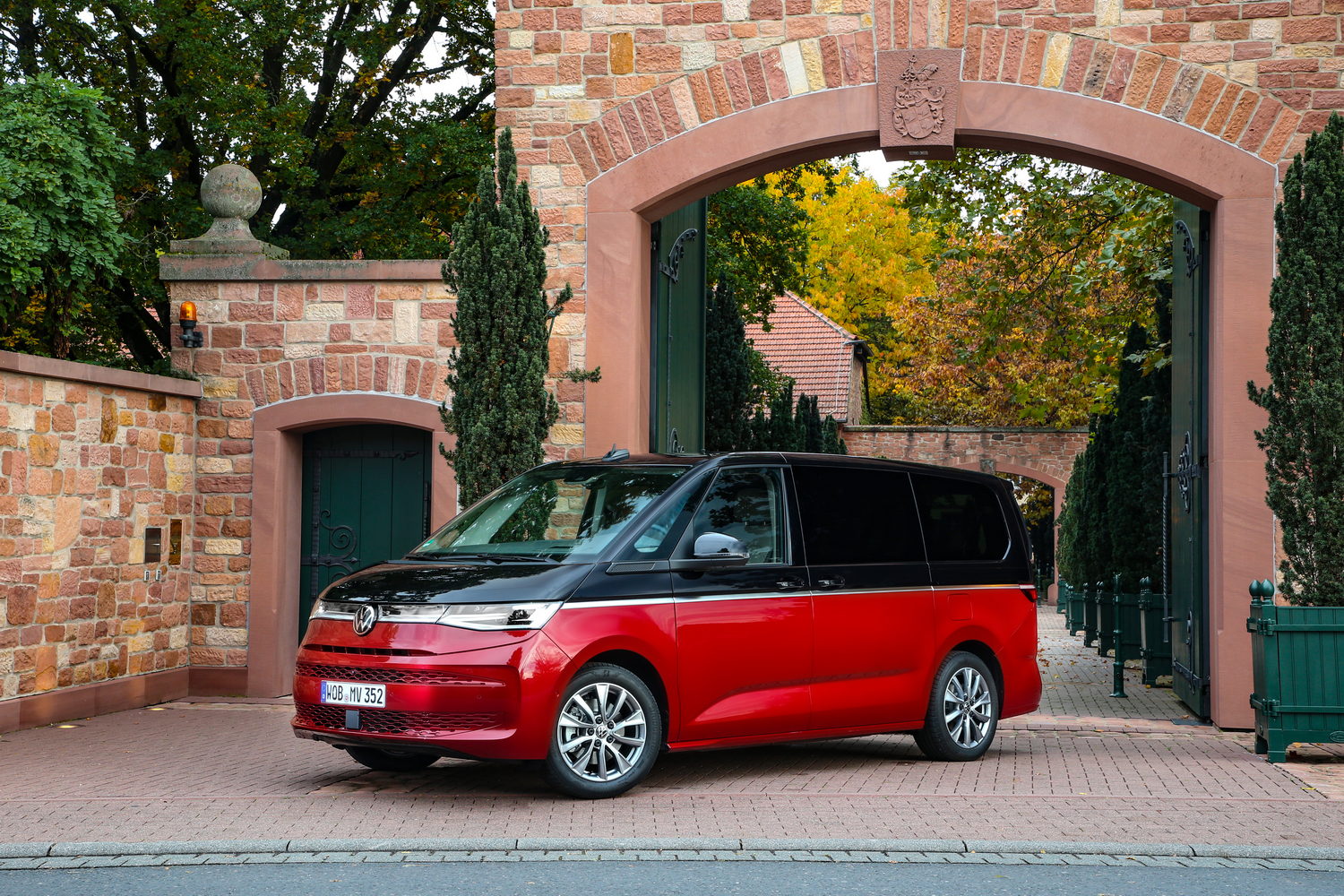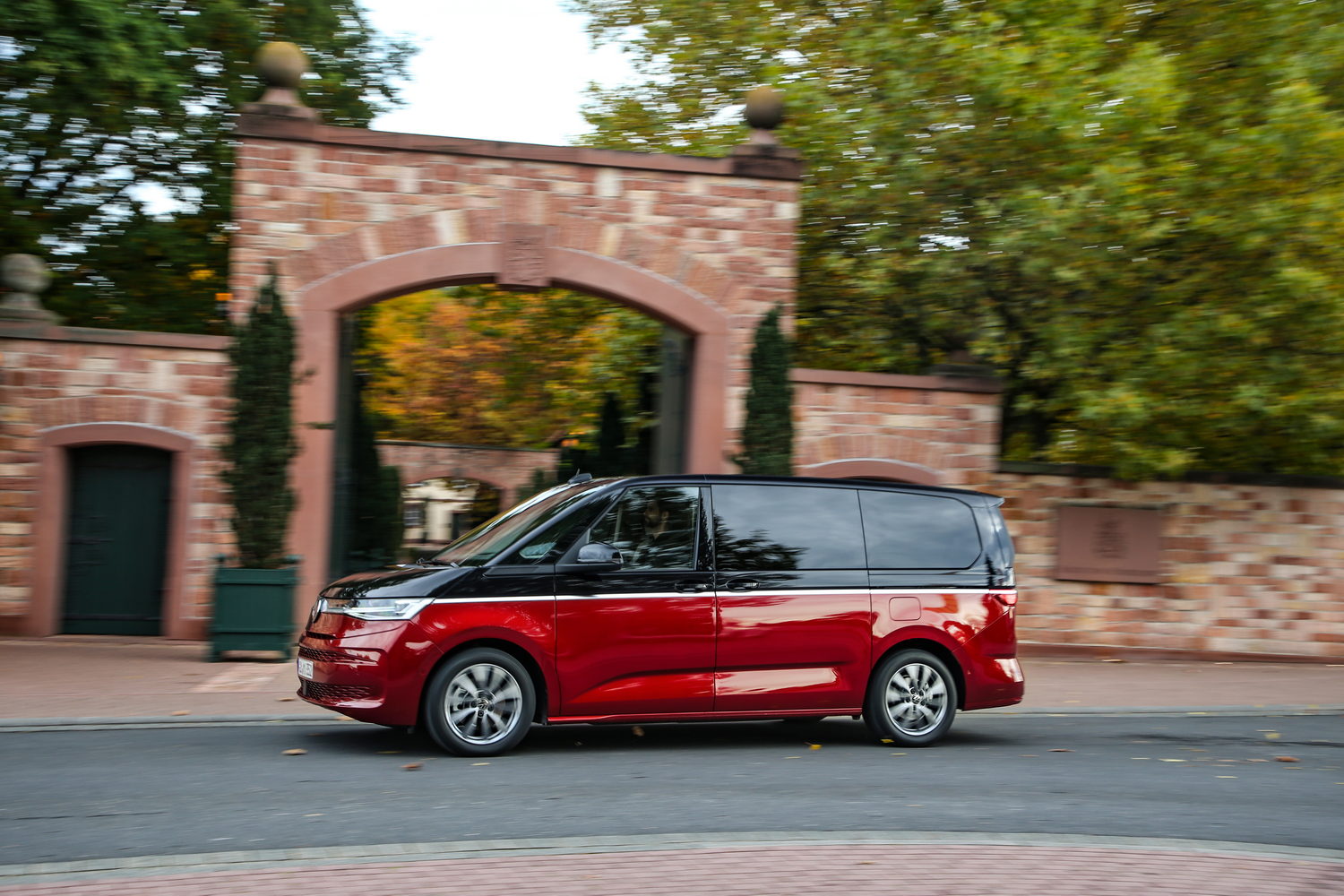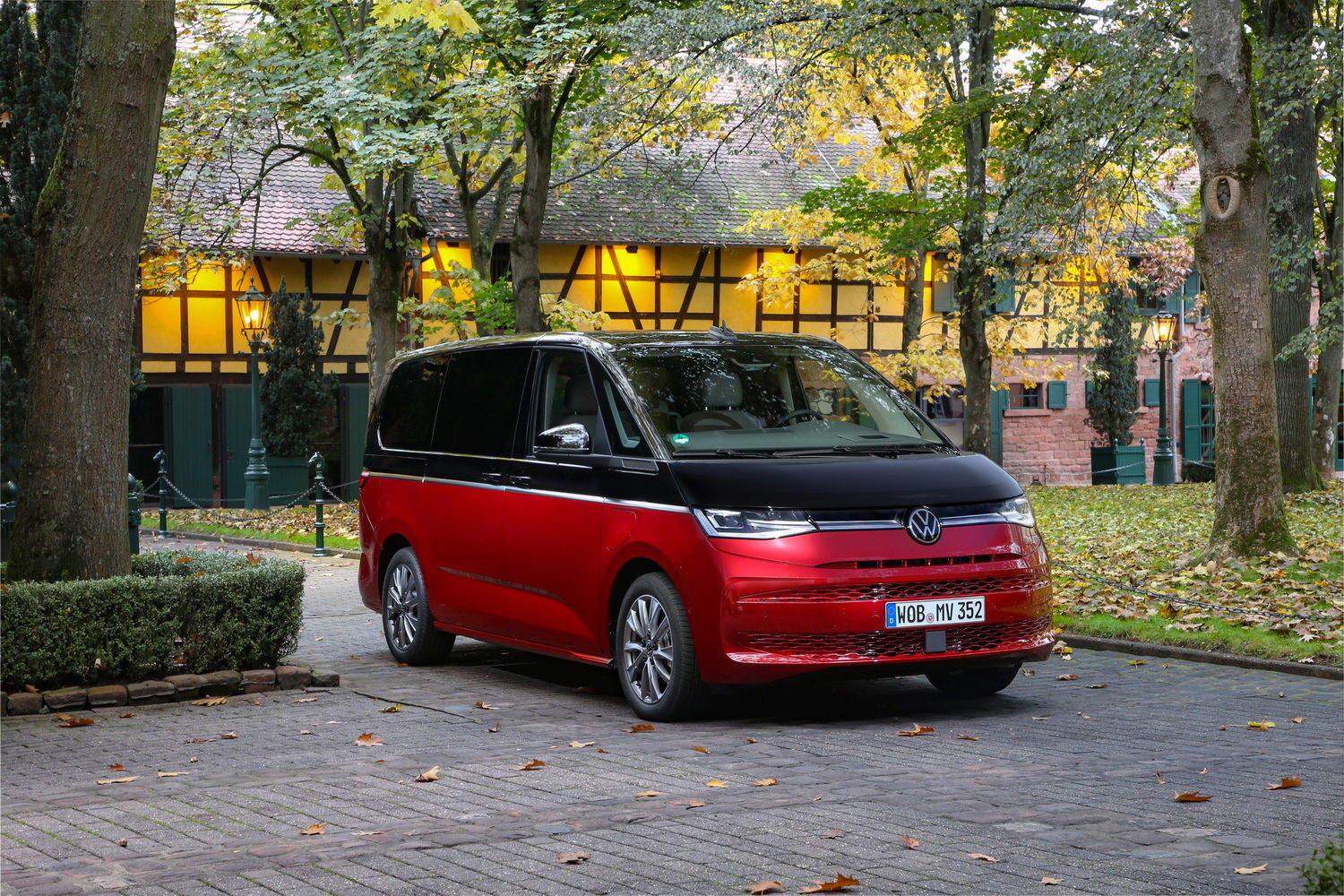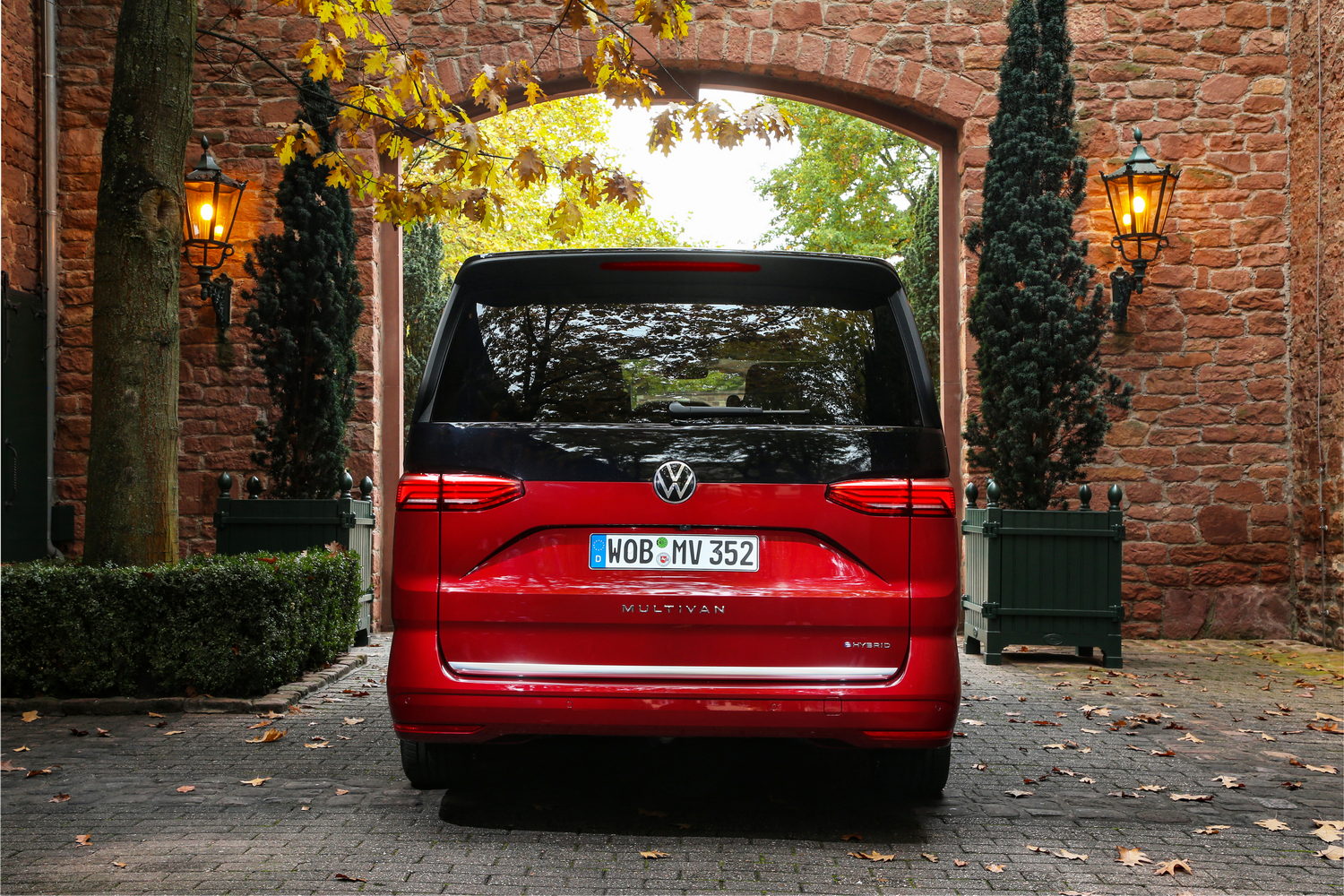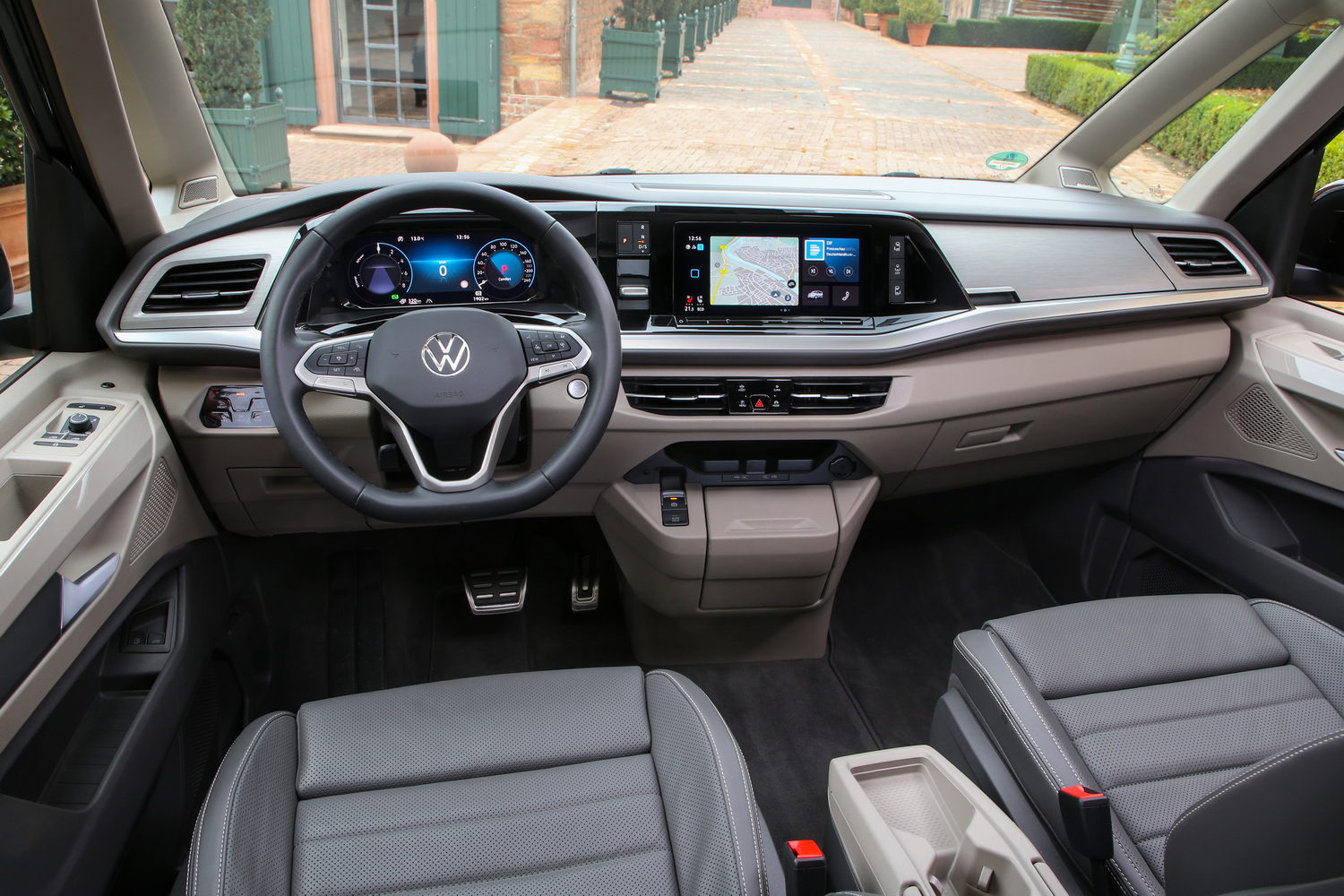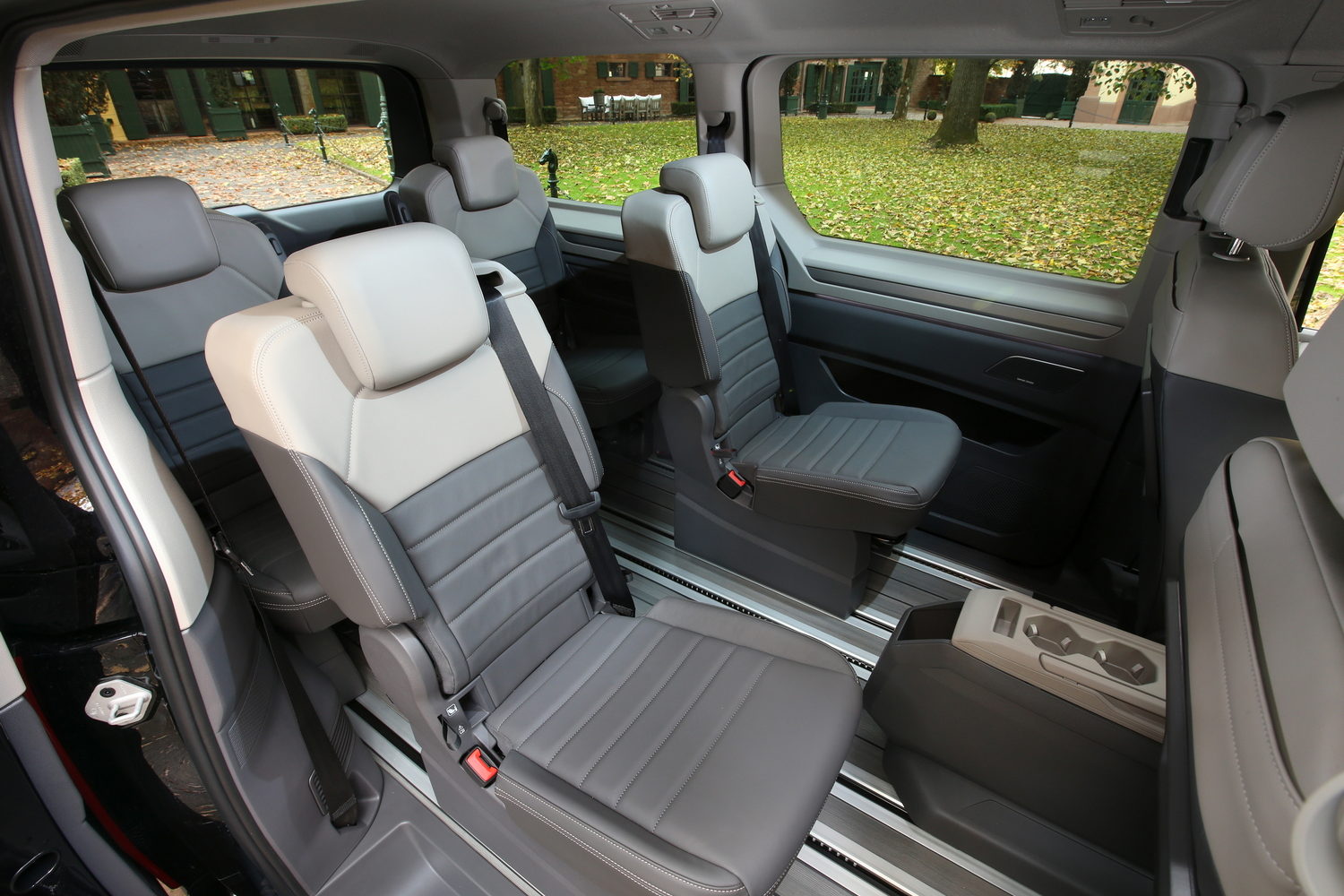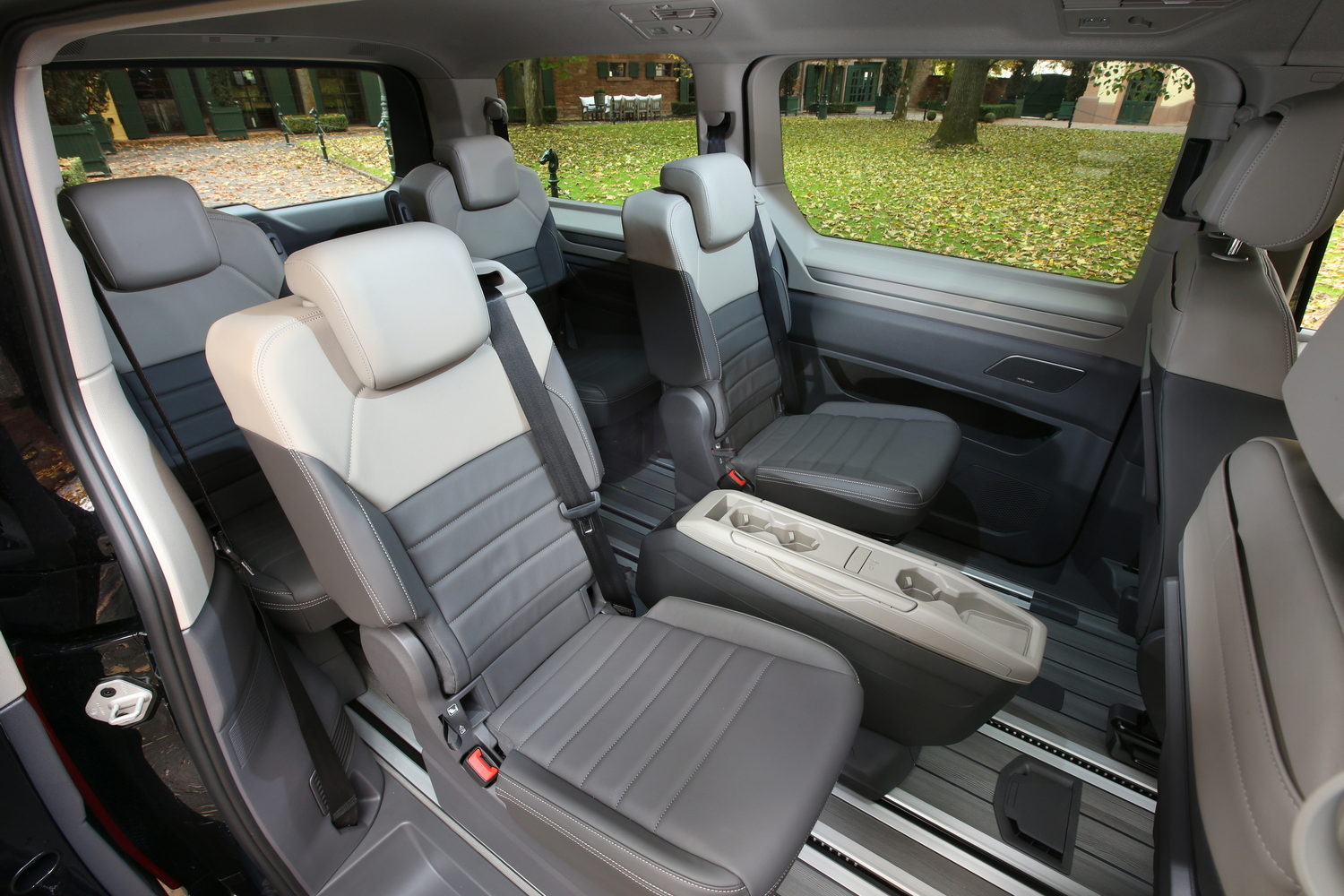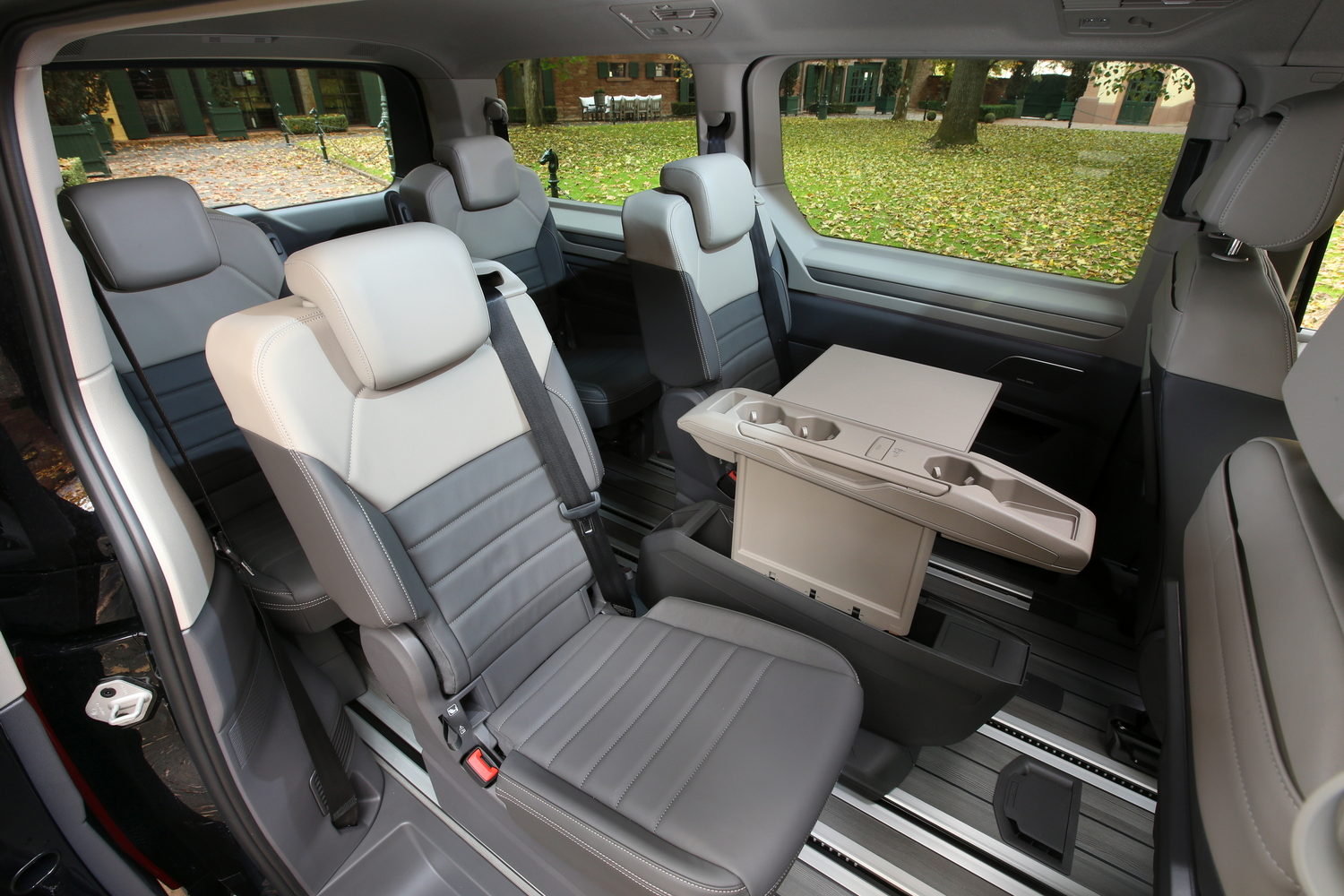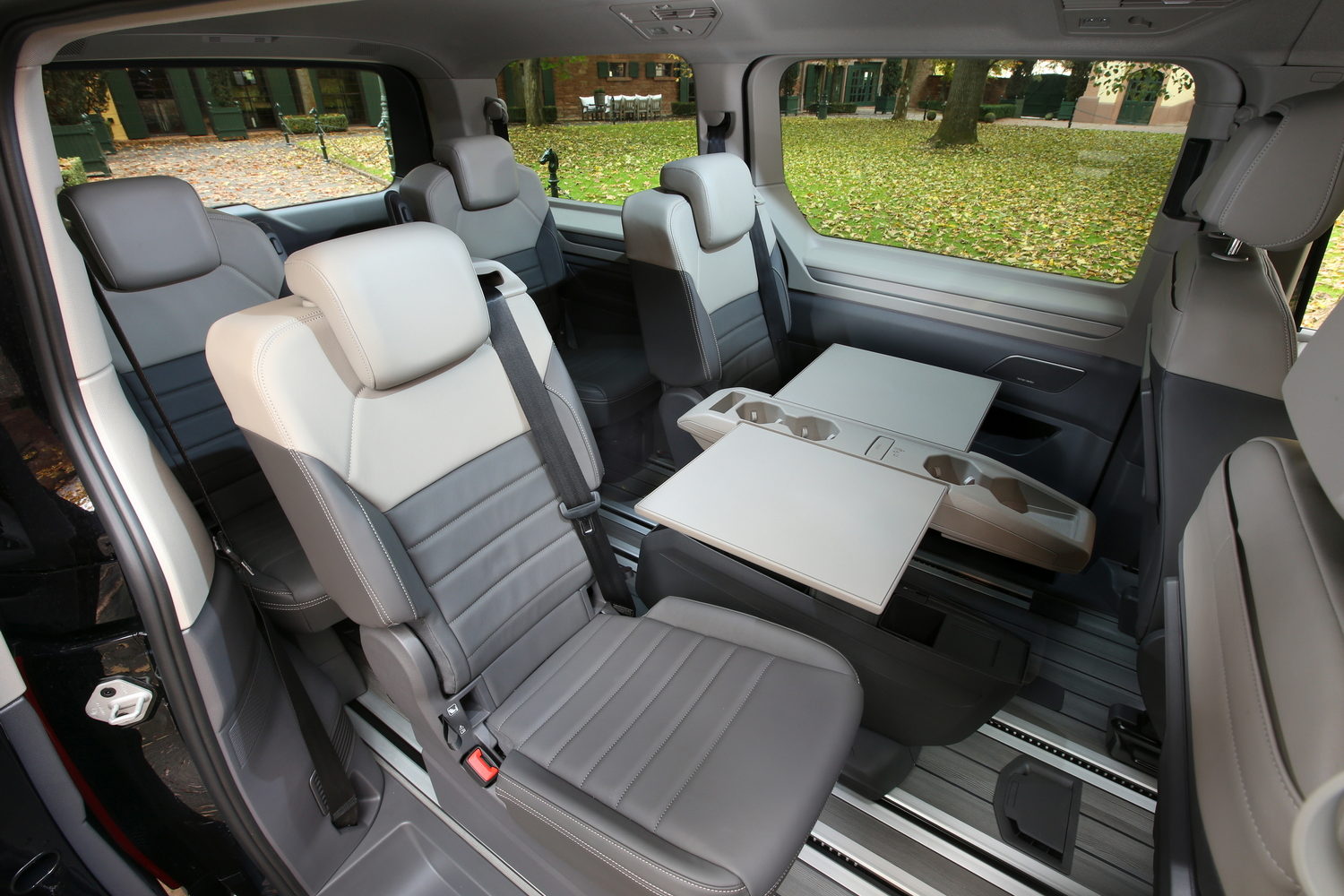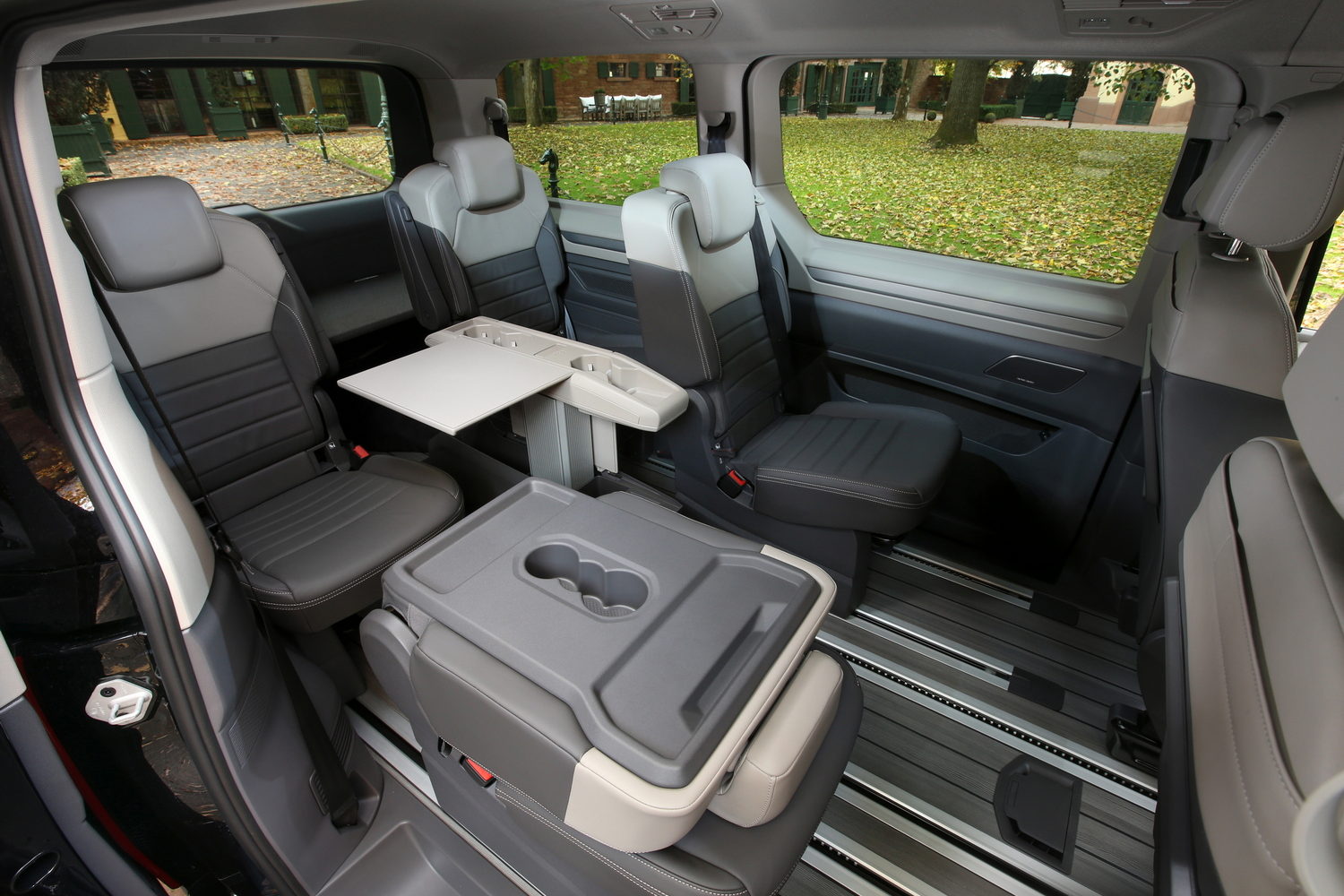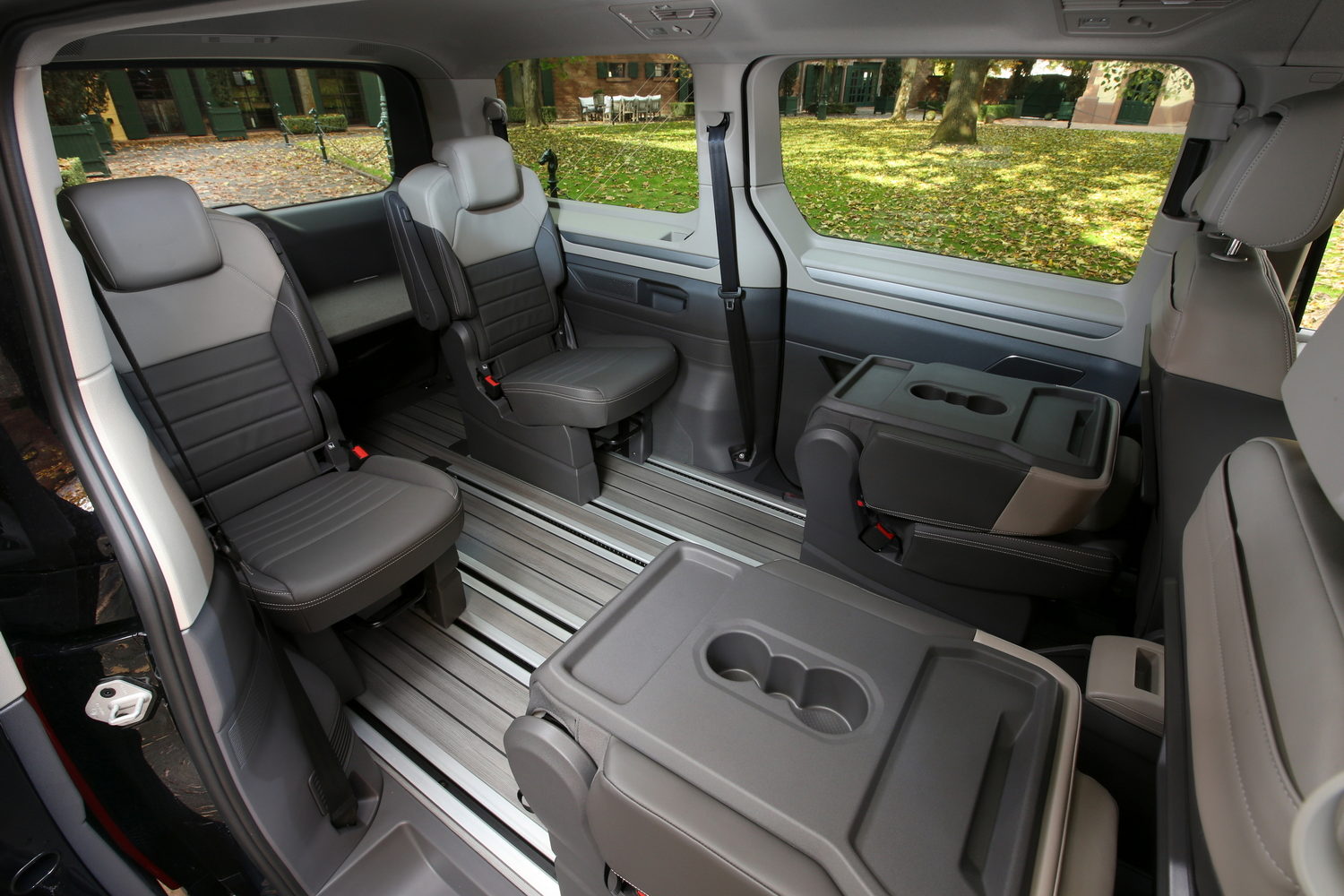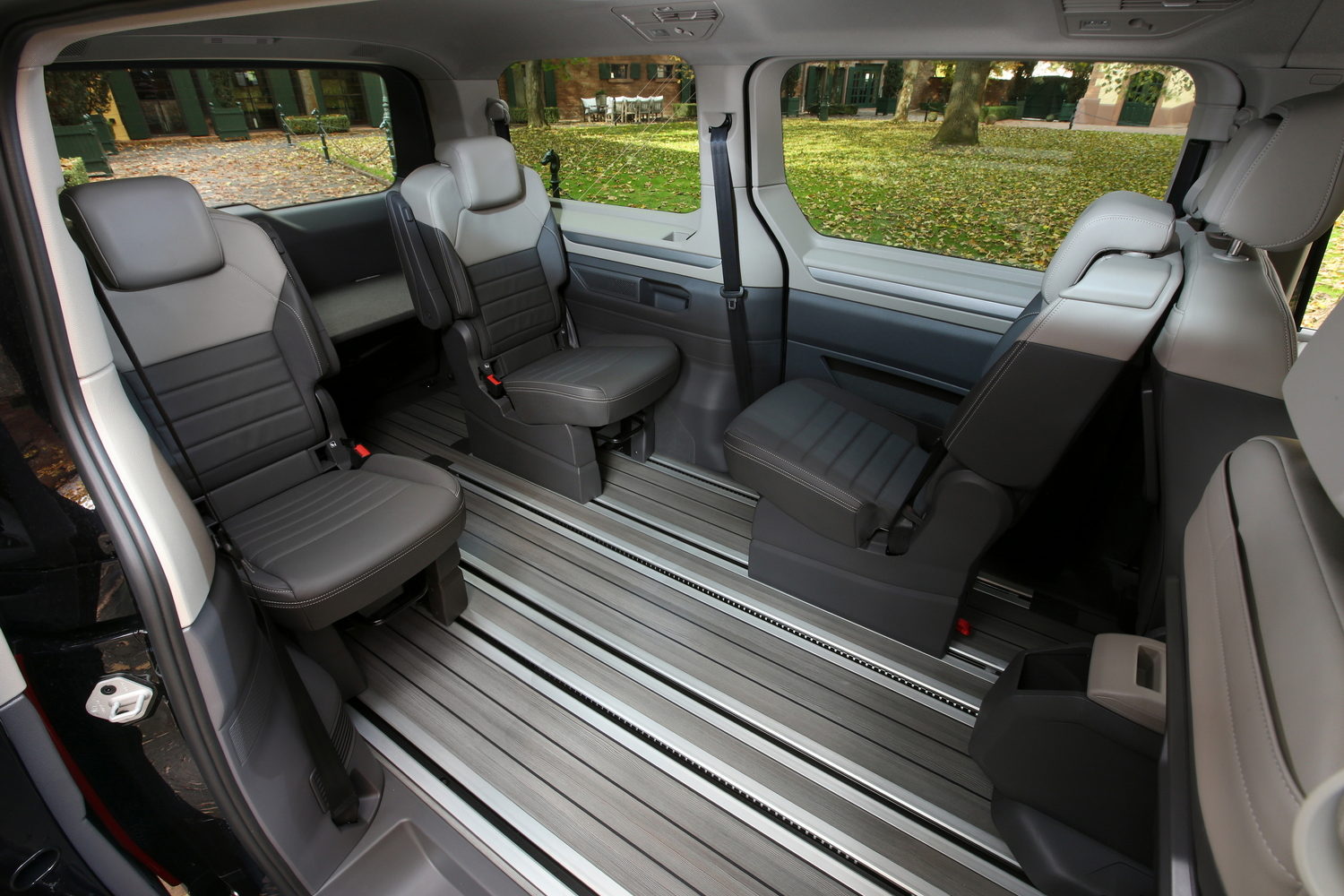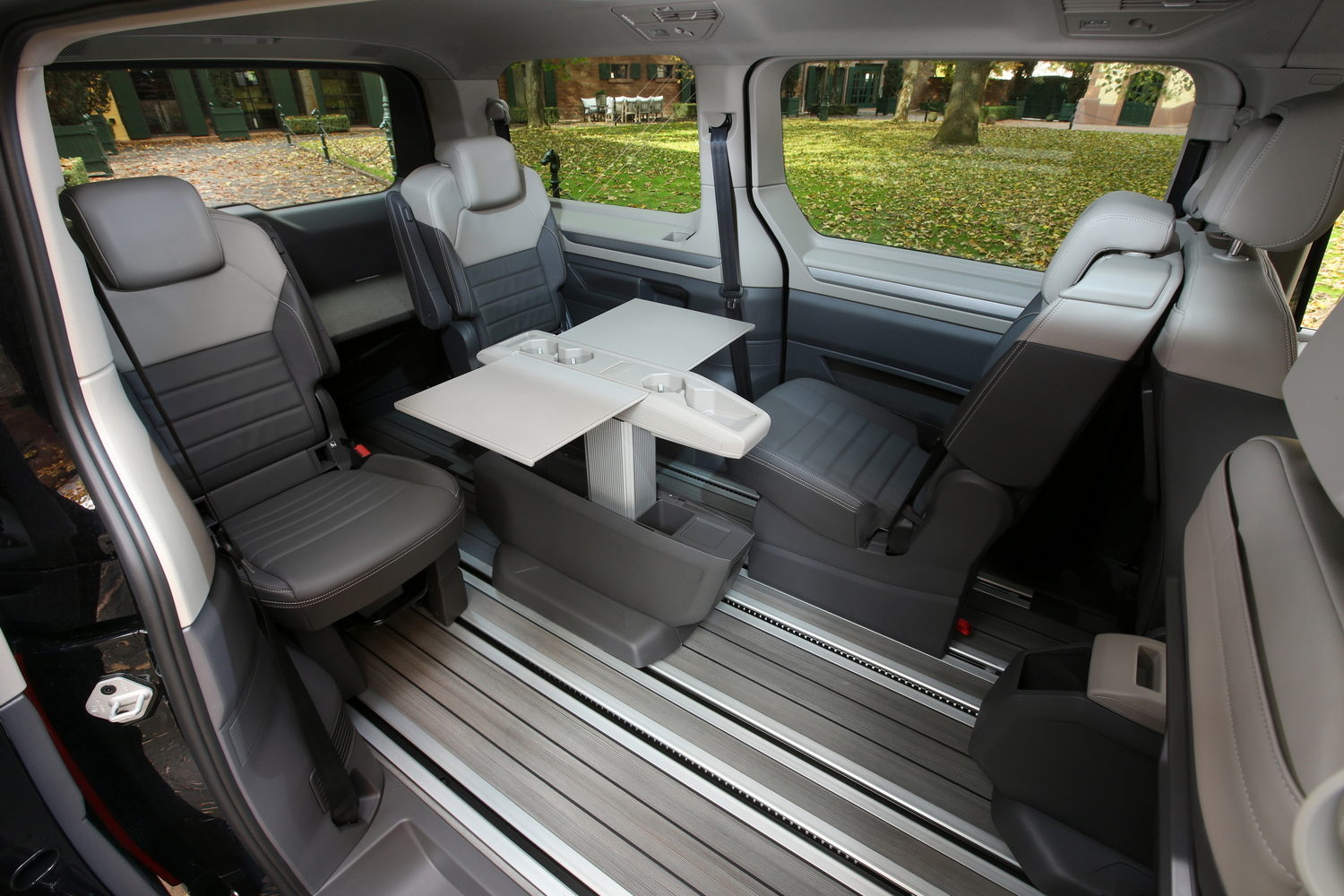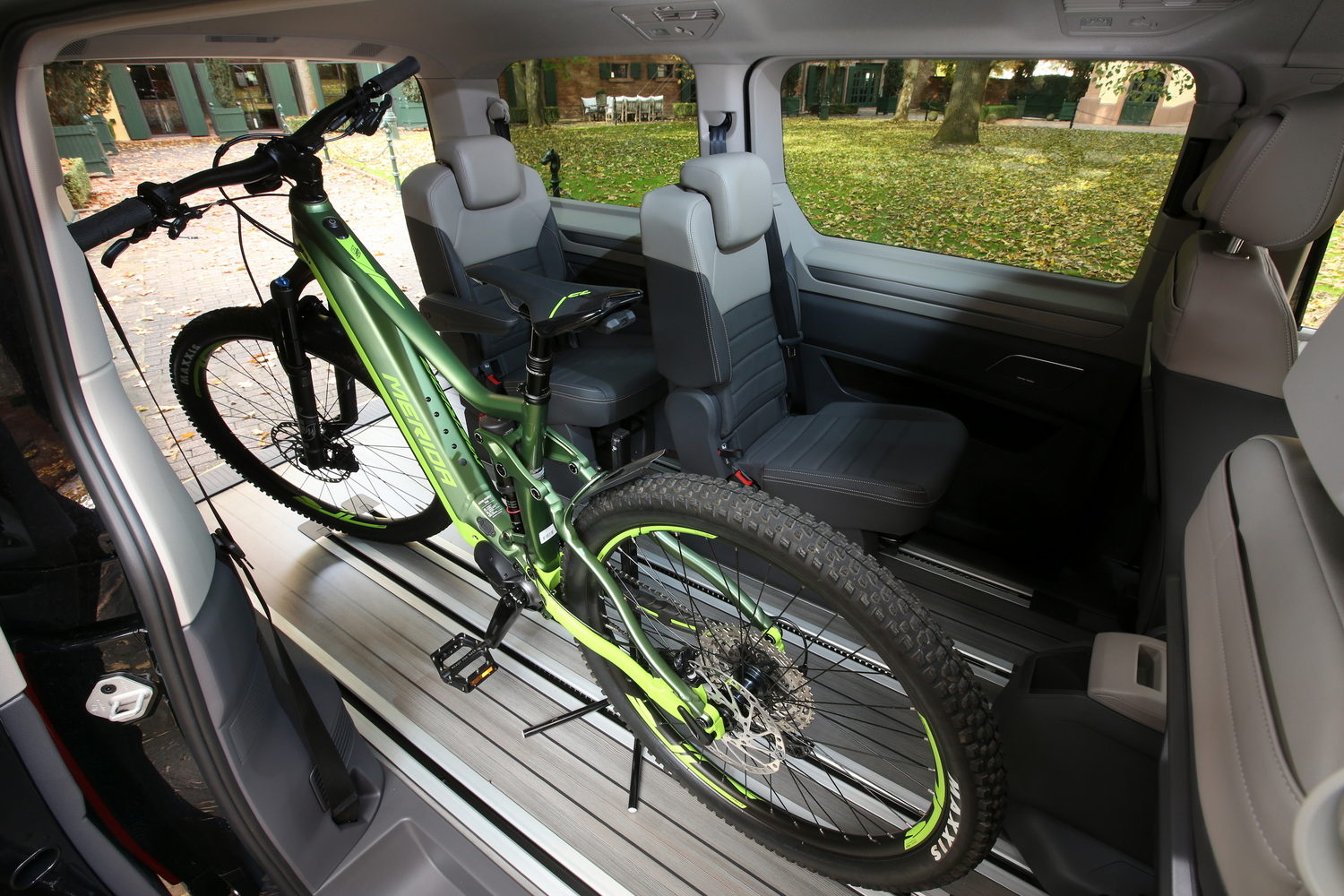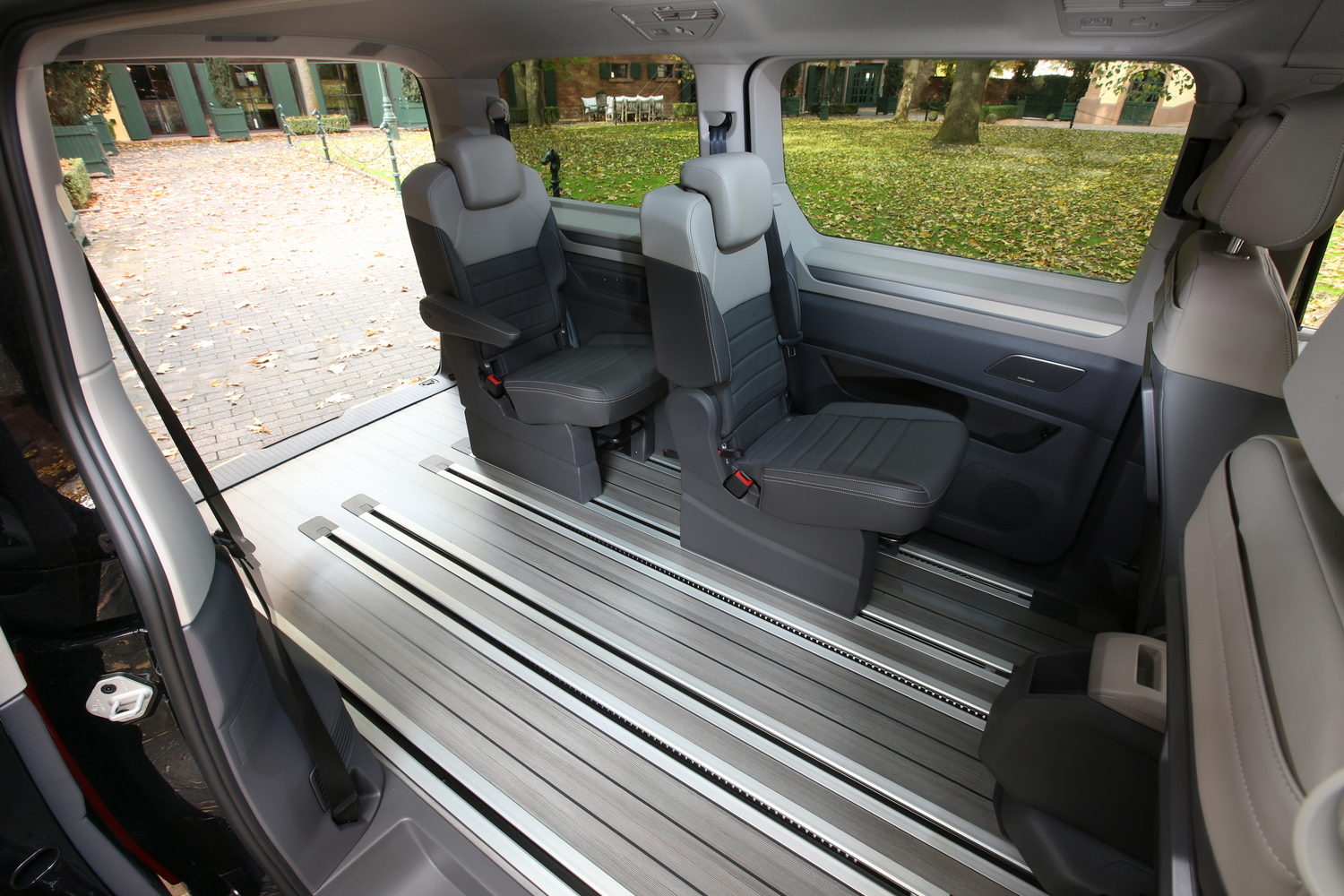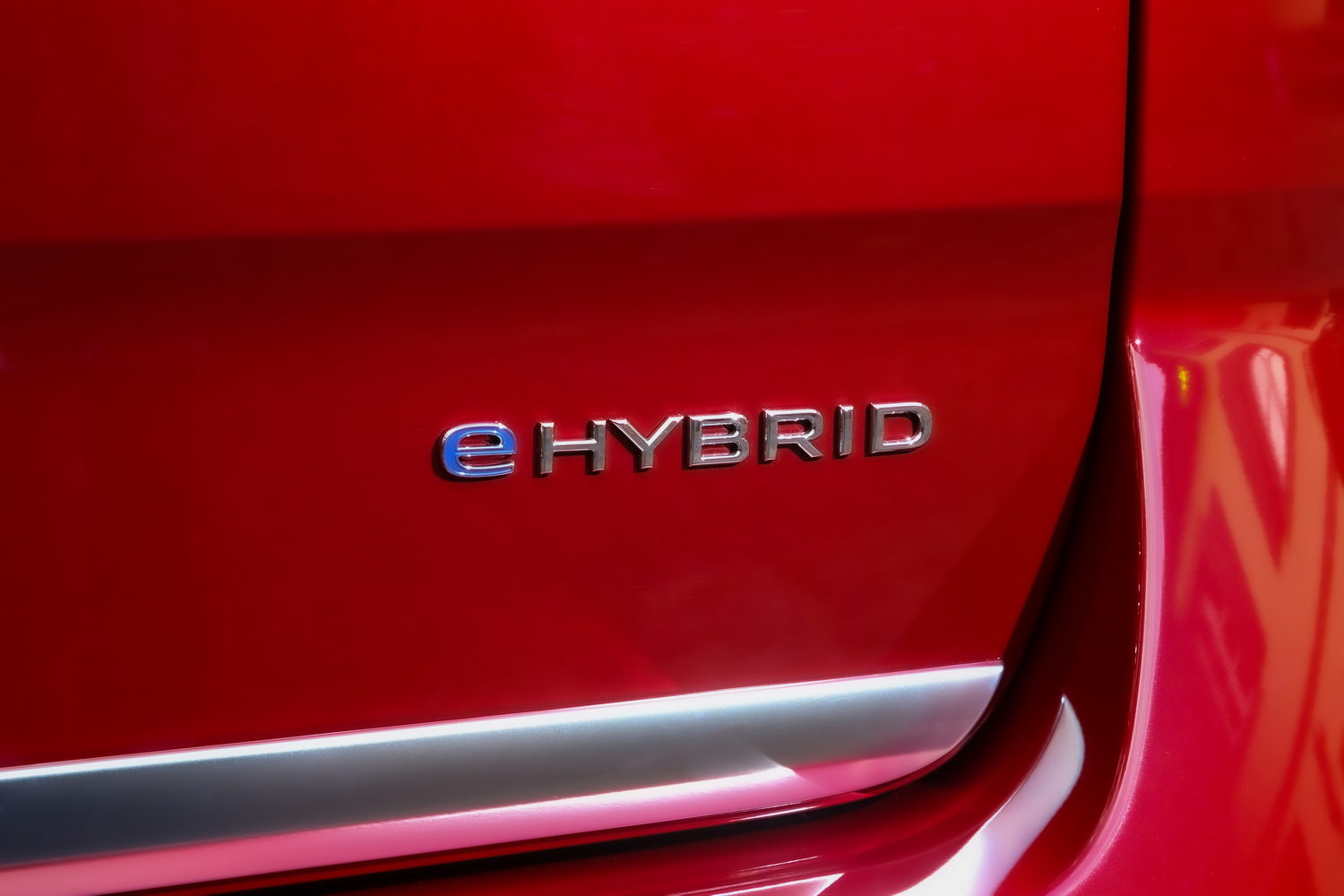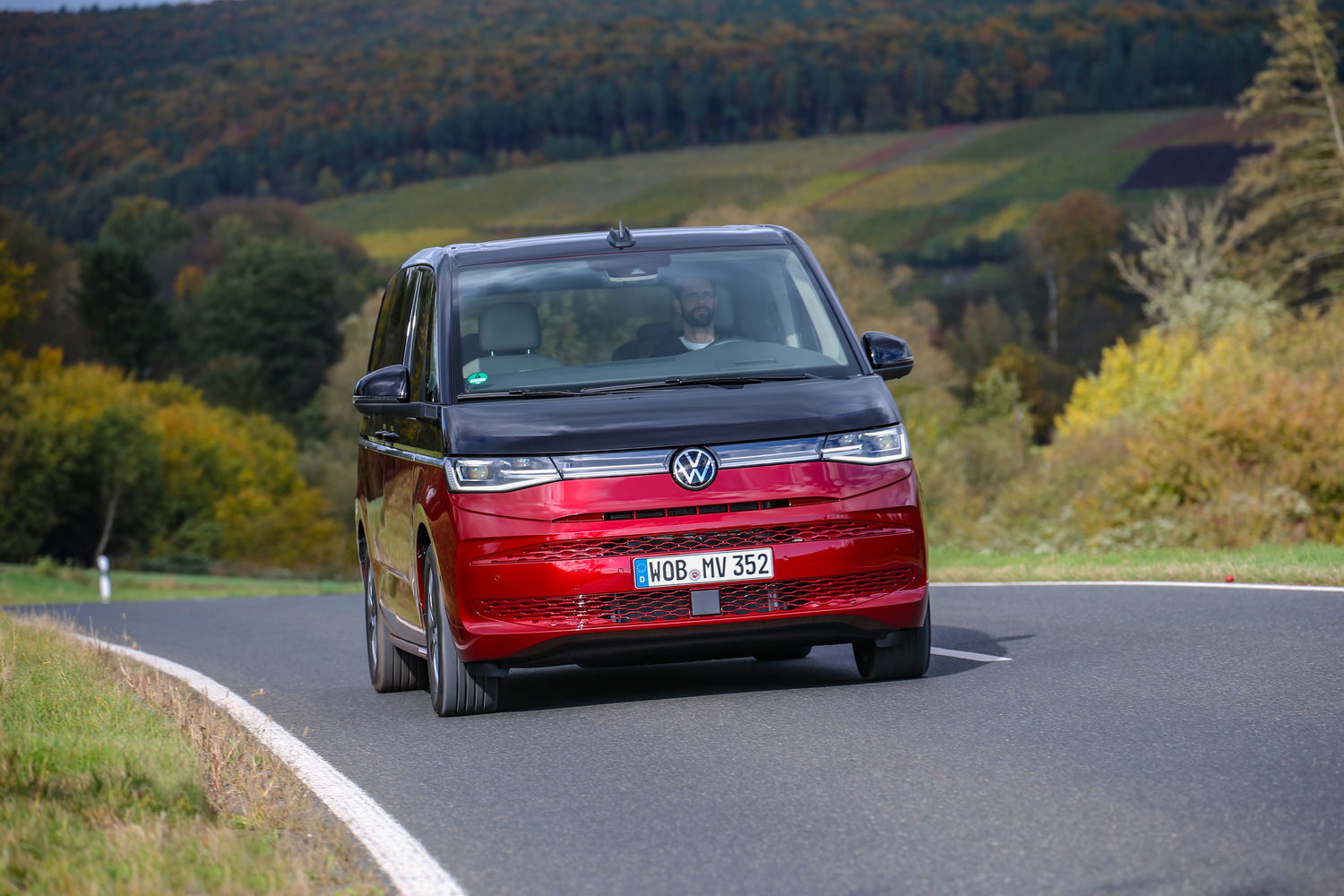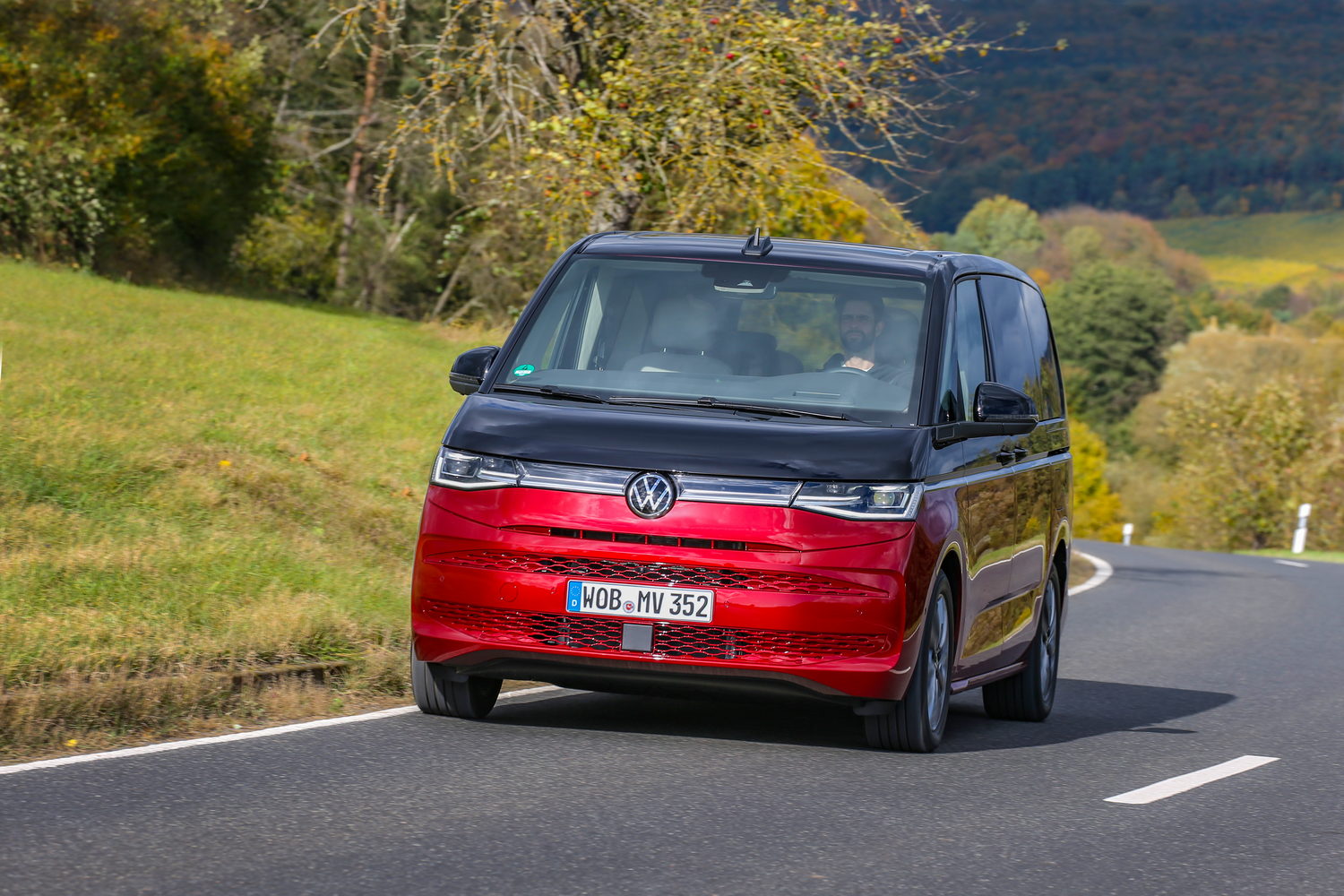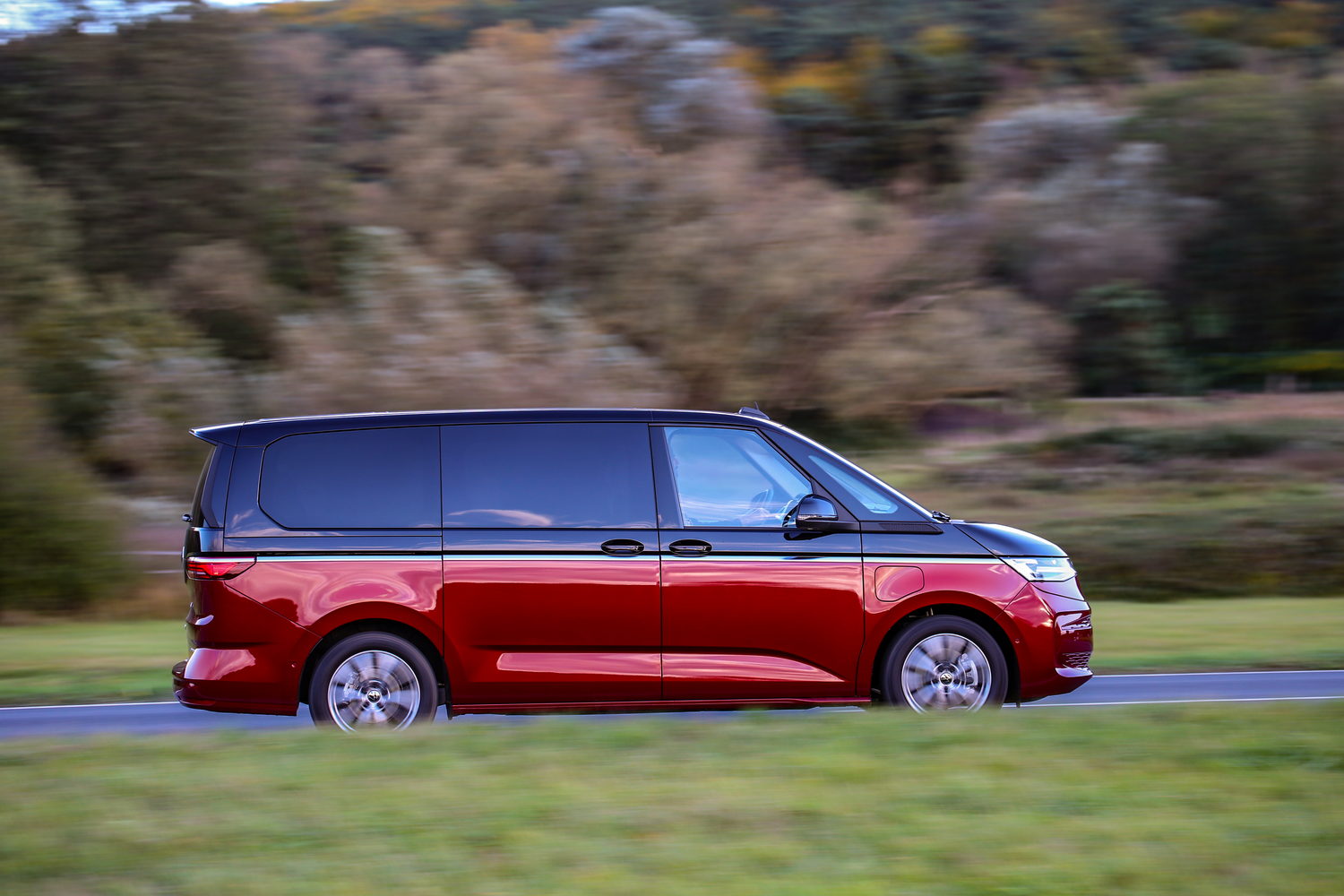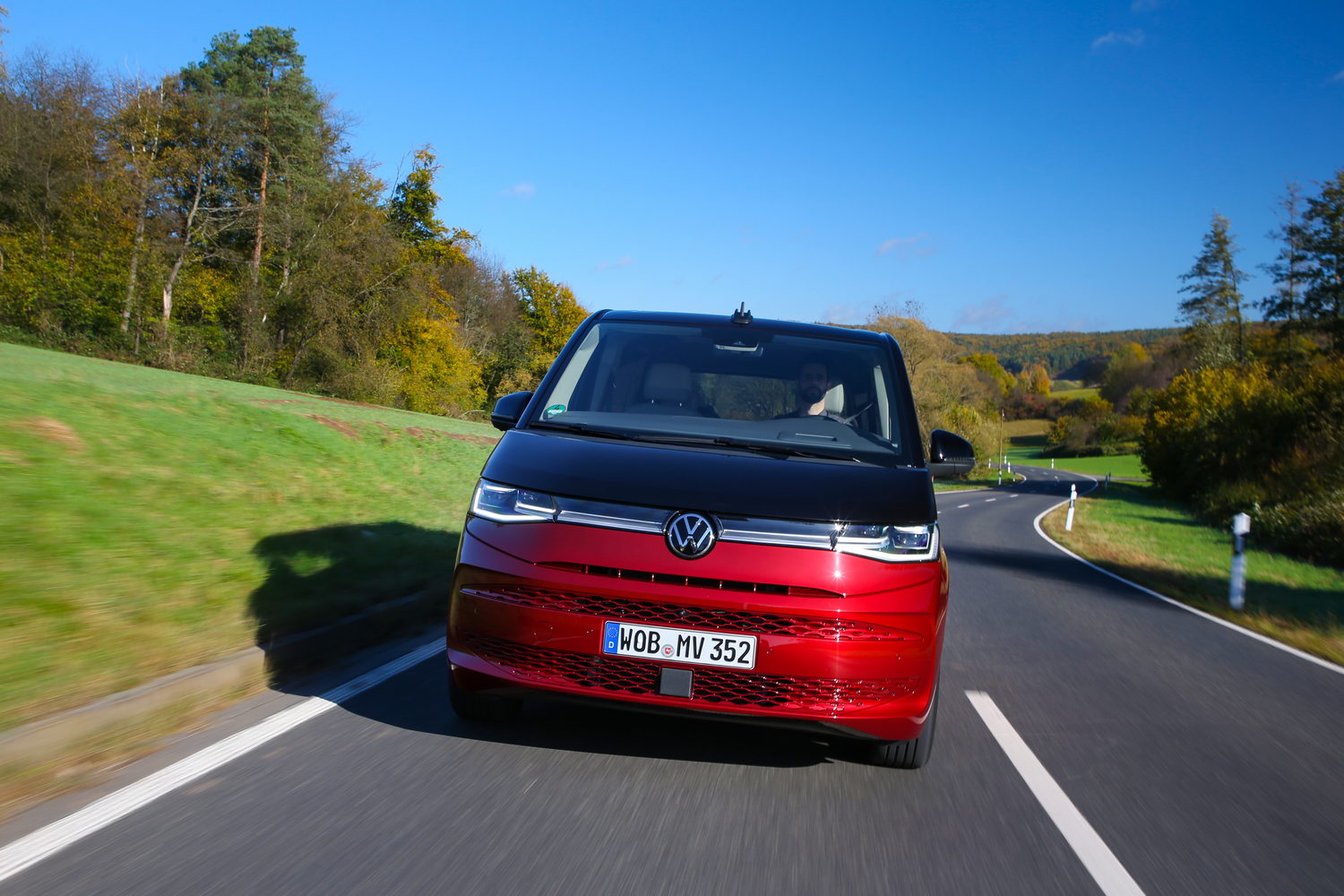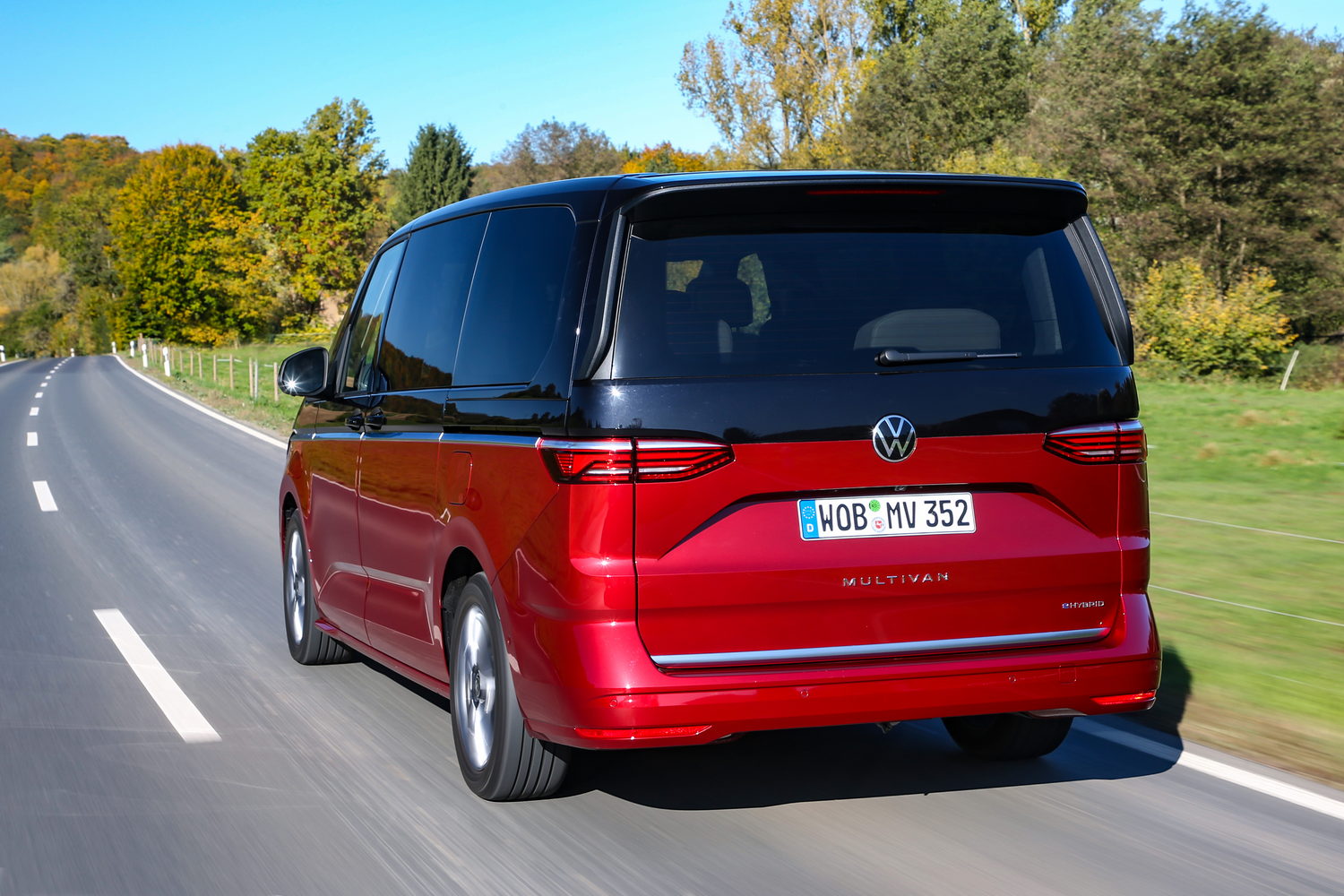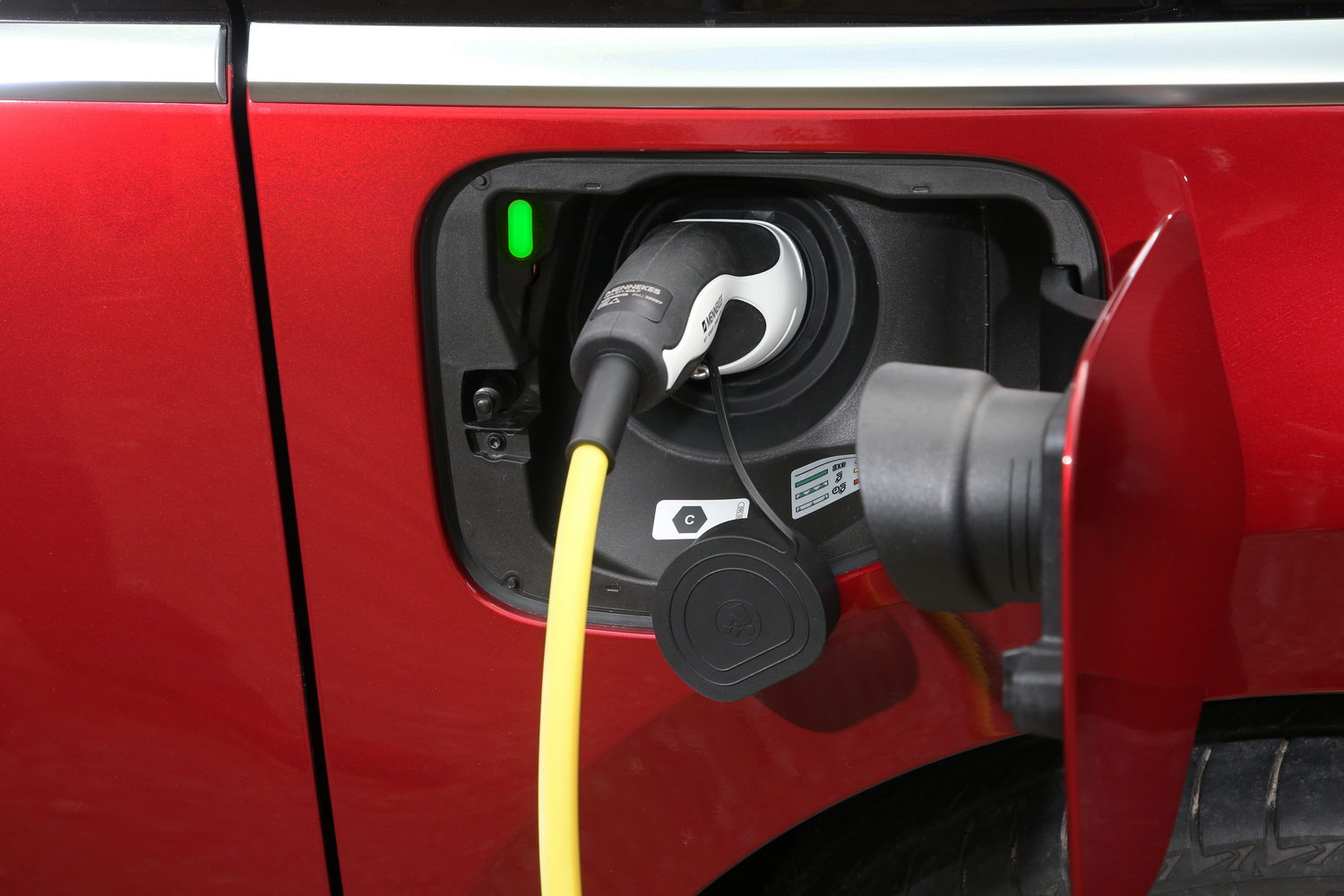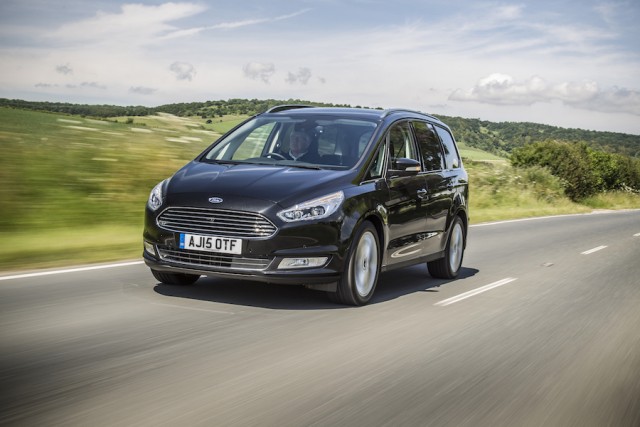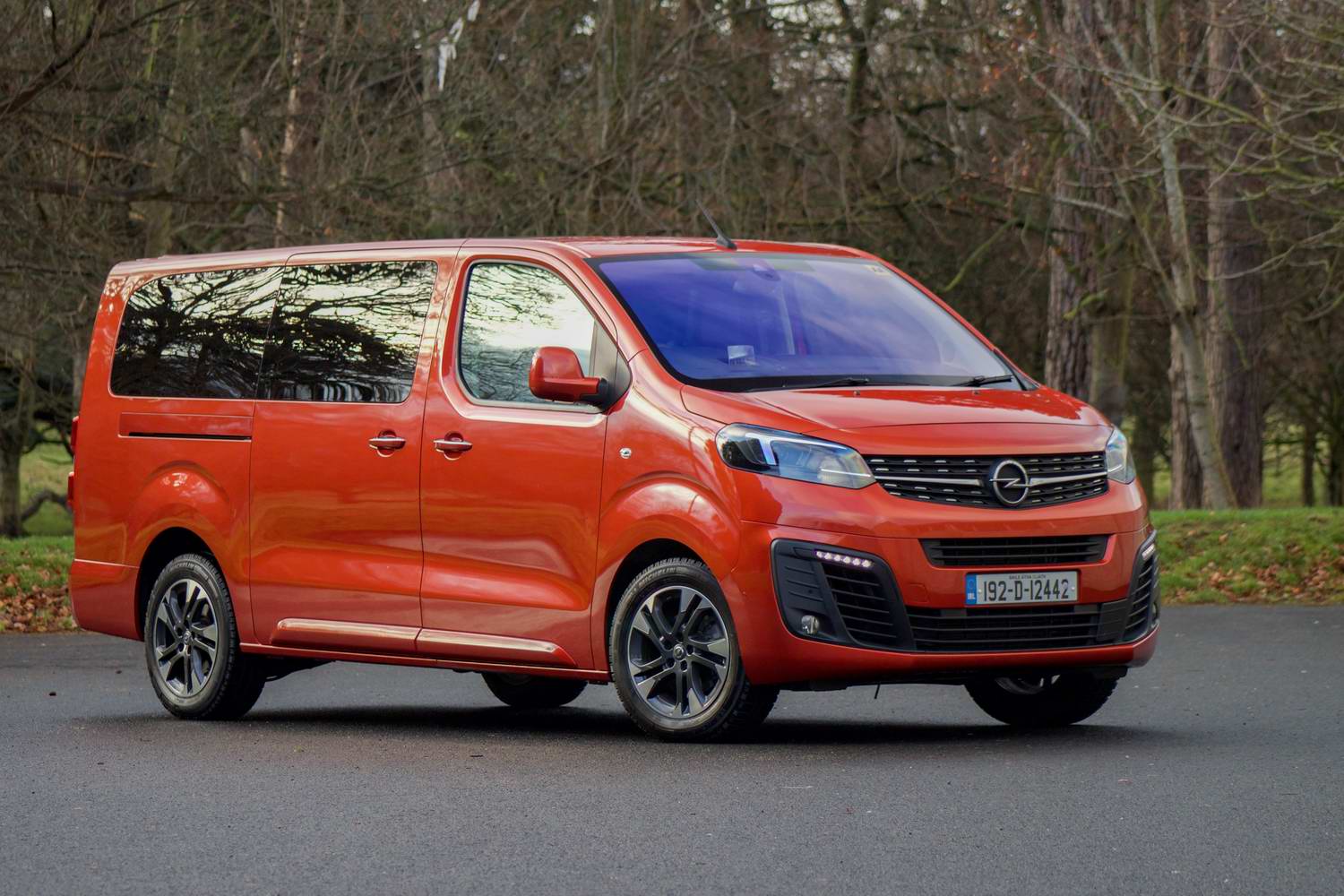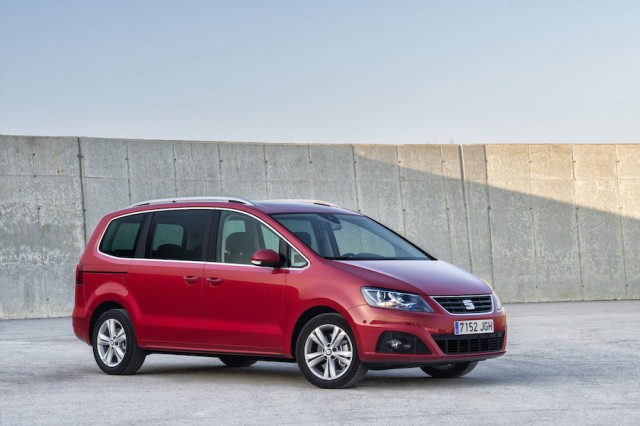Until now, the Volkswagen Multivan was a derivative of the Transporter commercial vehicle, which included panels cans, crew cabs and the California camper van, although the Multivan was never marketed under that name here in Ireland.
That multi-purpose remit meant some compromise in each instance. With the passenger versions, even the upmarket Caravelle, that meant a lack of overall comfort and refinement compared to a passenger car developed to be that from the start. At the same time, the styling didn't interest private, non-business buyers.
Volkswagen has now completely re-thought the Multivan, using a bespoke design that won't deter business owners but is sure to ping more loudly on the radar of families and individuals that need a more functional car.
In the metal
There are only so many ways in which you can design a van; after all, it has got to be boxy to make the most of its interior volume and it must be as practical as possible. When initial planning for the Volkswagen Multivan began as far back as 2015, one of the most important factors was that it was smaller than the VW Transporter van to make it less demanding to park. So the roof height is 1,907mm for a start (a Transporter is 1,990mm), making it easier to access car parks. Despite this, there is more interior height thanks to the use of Volkswagen Group's 'MQB' platform, which has a lower floor level. This architecture also enabled Volkswagen Commercial Vehicles to create its the first plug-in hybrid.
The modern headlights and grille make the Multivan look more civilian and in the two-tone colour scheme it looks especially vibrant. There are three to choose from, but if you prefer something more subtle, there are eleven solid colours, too.
There is only one wheelbase for the Multivan but there are two body lengths, the longer adding 200mm aft of the rear wheels to boost luggage space behind the third row of seats. Sliding rear doors on each side provide easy access and are more convenient in tighter parking spaces than conventional hinged doors.
At the core of any passenger-based van is the optimisation of interior space and the Volkswagen Multivan is no different, enhanced by the numerous ways in which the rear passenger section can be configured. The Multivan includes seven seats from the mid-level 'Life' specification, though the base version gets six. All rear seats are individual items, making it easier to adjust, move or even take out of the vehicle.
Volkswagen has also made these chairs 25 per cent lighter than previous removable seats. One ingenious solution is that the Multivan has electrified rails on the floor. In addition to sliding and positioning the seats, these can also be heated without the need to do any plugging-in or connecting of power.
Up in the front seats, there's an elevated driving position with excellent visibility. Along with the Multivan's large windscreen, a split A-pillar adds more glass to reduce the potential for blind spots. A 10.25-inch digital instrument display can be configured in different ways and there is also a 10-inch touchscreen with the usual smartphone connectivity.
To maximise room in the front, the Multivan uses only automatic gearboxes so that the smaller shift-by-wire gear selector can be fixed onto the dashboard between the two display screens. There is also an electronic parking brake leaving a flat floor in the front and enough space to walk through to the rear.
Driving it
Keen to expand sales of the Multivan into the passenger car segment, Volkswagen has gone to great lengths to make it a more enjoyable vehicle to drive. Much work has gone into the suspension design in a bid to provide a more comfortable ride, which traditional car buyers would expect to experience. The Multivan certainly provides quite a smooth and polished ride on varying surfaces in comparison to the Volkswagen Shuttle.
In the eHybrid model, which will be the first of the Multivans to arrive in Ireland during 2022, the 13kWh battery (10.4kWh net) is theoretically capable of up to 50 kilometres of electric-only driving. As with other plug-in hybrid Volkswagen models, the Multivan will always begin its journey using electric power so long as there is some charge in the battery. Speeds of up to 140km/h are possible using only the electric motor, after which the combustion engine automatically activates.
Power levels are adequate with the electric motor alone generating 116hp and 350Nm. The electric power delivery is expectedly smooth and quiet, but the 1.4-litre petrol engine can be hushed so long as it isn't being put under too much strain. Put your foot to the floor and the two working together produce up to 218hp, but things get noisy when you do that.
In a typical urban setting the Volkswagen will make light work of getting from A to B and do so in a fair degree of comfort.
Having a full accompaniment of passengers on board will begin to eat into the battery range, but it can be charged up in a reasonable 3 hours 40 minutes via the battery port on the driver's side front wing. To help prolong electric running, the shift-by-wire system can be switched to a setting to increase energy recovery, instigating a sort of one-pedal driving feel. When the battery depletes, it will continue in a hybrid mode that alternates between the combustion engine and the electric motor. The driver can also reserve a set level of charge in the battery if it needs to be kept for a zero-emission segment of the journey.
What you get for your money
The Volkswagen Multivan will have a starting price of €56,435 including VAT in Ireland for the entry-level plug-in hybrid. This version will be the only engine option available at launch, but a 150hp diesel will follow later in 2022.
Standard equipment includes 17-inch alloy wheels, LED headlights, air conditioning, digital instrument display, 10-inch touchscreen infotainment system and six seats. On the driver assistance side, the Multivan gets front and rear parking sensors, cruise control, lane assist, front assist with emergency braking (that features cyclist and pedestrian detection) and a new swerve support and oncoming vehicle braking system.
The Life specification, from €60,040, adds chrome strips to the grille, two-tone seat upholstery, the seven-seat setup, increased sound insulation, ambient lighting with 30 colours, a reversing camera, Light Assist and a Poor Weather Lighting package.
For the €71,240 Style trim level the Multivan gets 18-inch alloy wheels, chrome exterior trim, rear privacy glass, LED matrix headlights and electrically powered sliding doors and tailgate with soft-close functions. The interior gains three-zone climate control, further sound insulation, heated front seats in a two-tone microfleece material, sliding windows in the side doors, a multifunction centre console and folding table unit and woodgrain interior inserts. A 360-degree camera system for parking, side assist for lane changes and blind spot detection, adaptive cruise control and cornering lights are added to the driver assistance systems.
Summary
By reinventing the Volkswagen Multivan as a bespoke passenger model it still appeals to business users but becomes a more attractive proposition to private buyers than before. Families will love the vast interior space and its plug-in hybrid system has benefits for those with shorter journeys to undertake.

